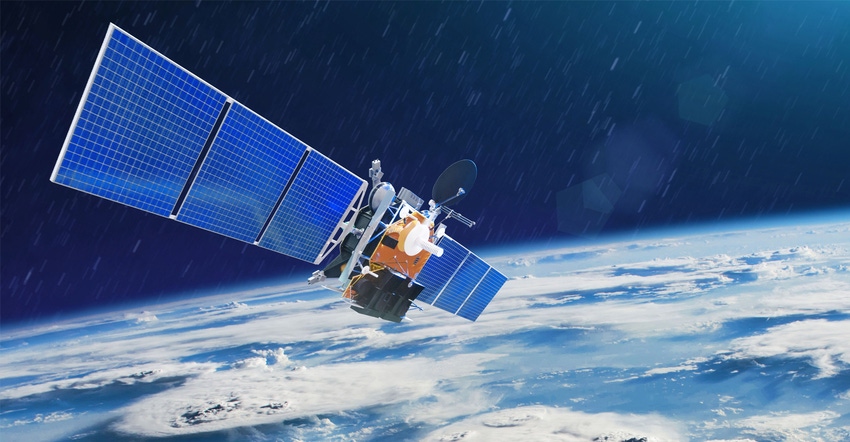
If you haven’t discovered Planet’s daily satellite images, check them out. Recently, Planet acquired VanderSat, a company extracting variables like soil moisture, land surface temperature and information about biomass from satellite data. Look for new products from this acquisition soon.
The technology that VanderSat uses isn’t affected by cloud cover. With information from both companies, the result will be better crop decision making. For example, by combining the two technologies, consultants know when crops are shutting down before it’s obvious to the eye, providing an edge on deciding when to continue spraying or feeding a crop, and when to stop. See Planet acquires innovative satellite imagery firm.
2 companies partner for autonomy
German equipment maker Horsch will partner with Trimble, a leader in guidance and GPS correction services, to move deeper into autonomous equipment. Horsch is testing an autonomous seeder with its own non-electric power unit in Germany. What Horsch needs most is security for operation, what spokespeople call a “geofence.” It’s a safe reference signal for GPS equipment on big tools “leaving the farm,” and Trimble can provide it.
Look for Trimble technology in a Horsch sprayer in North America this year. The first step toward autonomy for a sprayer in the U.S. is more automation with a driver aboard. Look for it in this sprayer. See Horsch, Trimble partner for automation.
Botanical fungicide worth watching
Botanical Solution Inc. has offices in Davis, Calif., but deploys products around the world. Its lead product is aimed at high-value crops, not corn and soybeans. So, why should you care?
Simply because biocontrols are exploding everywhere, and the same technology may soon produce products for your crops.
The product the company is developing doesn’t contain fungi or bacteria. Instead, the active ingredient is an extract from the soapbark tree, native to Chile. Quillibrium is under review by the U.S. EPA. The initial focus will be on strawberries and grapes, where the biocontrol product stops botrytis and powdery mildew. See Botanical fungicide approach expands to new markets.
Autonomous Indy cars show their stuff
Why do you care if PoliMove, a team of students from Politecnico in Milan, Italy, won a million dollars by going over 157 mph on the famed Indy 500 track in Indianapolis and recently won an additional $150,000 in a passing challenge for autonomous vehicles at the Las Vegas Motor Speedway?
You might care if seeing these driverless cars go fast and pass increases confidence that autonomous vehicles will perform as advertised anywhere. To see the cars run, visit indyautonomouschallenge.com. Also see Robot cars hit the track.
New planters, drills from Case IH
Make choosing 15- or 30-inch rows a game-time decision with the Case IH 2150S Early-Riser, front-fold trailing planter coming for 2023. Switch from one-row spacing to the other easily. A flex-wing design gives the planter 15 degrees of travel up and down to improve operation on hilly terrain. Plus, each row unit has 16 inches of travel to help maintain contact with the ground.
Case IH also introduces the Precision Disk 550 air seeder for 2023, which spokespersons bill as the first upgrade for the air seeder in a decade. There’s more seed capacity, a more stable ride for row units and more precise seed placement. A standard stationary calibration package lets you check accuracy in the shop. See Case IH adds new planter, air drill.
Know carbon footprint of your cornflakes
You read right. If EarthOptics is successful in selling its concept to food companies, you may wake and read that producing that box of cornflakes took 1 pound of carbon out of the atmosphere. Spokespeople for the company’s Soil Carbon Project say the number would be based on carbon mapping. Plus, this innovative startup hopes food companies buy in to paying farmers for gains in carbon stored year to year, rather than through carbon credits.
The company dreams big because its carbon mapping technology has proven incredibly accurate. See Carbon program looks at consumer side.
See carbon in timber
Billy Beck, an Iowa State University Extension forest specialist, says farmers aren’t seeing the forest for the trees when it comes to trees capturing carbon. He suggests timberland is a possible way to generate income, either from timber sales or payments for carbon storage. Beck says the first step is touring your woods with a forester, looking for opportunities to increase value through timber stand improvement. Some services pay to defer harvest and keep carbon stored in trees. See Is your farm wasting a valuable asset?
New products for Simpas
Some of you may use the Simpas-applied Solutions system to apply pesticides and agronomic products on a prescription basis. Products approved for Simpas include Aztec HC SmartCartridge Insecticide, Counter 20G Smart Cartridge Insecticide/Nematicide, Force 10G HL SmartCartridge Insecticide, all from Amvac, and Zinc Micronutrient Smart Cartridge from Amvac and Verdesian Life Sciences.
New this year is MicroSync IronClad IDC micronutrient, also through Verdesian Life Sciences. It supplies iron for soybeans in high-pH soils where iron deficiency chlorosis is problematic.
Another new item is iNvigorate, the first liquid product for Simpas. Developed by Agrinos, iNvigorate promotes root growth and better absorption of nutrients, particularly in stress situations. Visit amvac.com.
Deere and Razor Tracking
If you operate green equipment, watch your support vehicles and non-powered equipment alongside JDLink-enabled equipment in Operations Center by integrating Razor Tacking devices. John Deere began working with Razor Tracking last year when Razor Tracking integrated JDLink-enabled equipment into its system. This next step means Razor Tracking is the preferred Operations Center connection for monitoring support vehicles and equipment.
The new integration lets Razor Tracking and Deere customers monitor equipment in either platform, see the item’s GPS location, and know the VIN, fuel level, heading, speed and more. Visit razortracking.com and deere.com.
About the Author(s)
You May Also Like




